Surajkund Craft’s Northeast Pavilion in India is an exemplar in bamboo building
The Northeast Pavilion at the Surajkund Craft Fair 2023, designed by atArchitecture, wins Best Use of Bamboo in the Wallpaper* Design Awards 2024
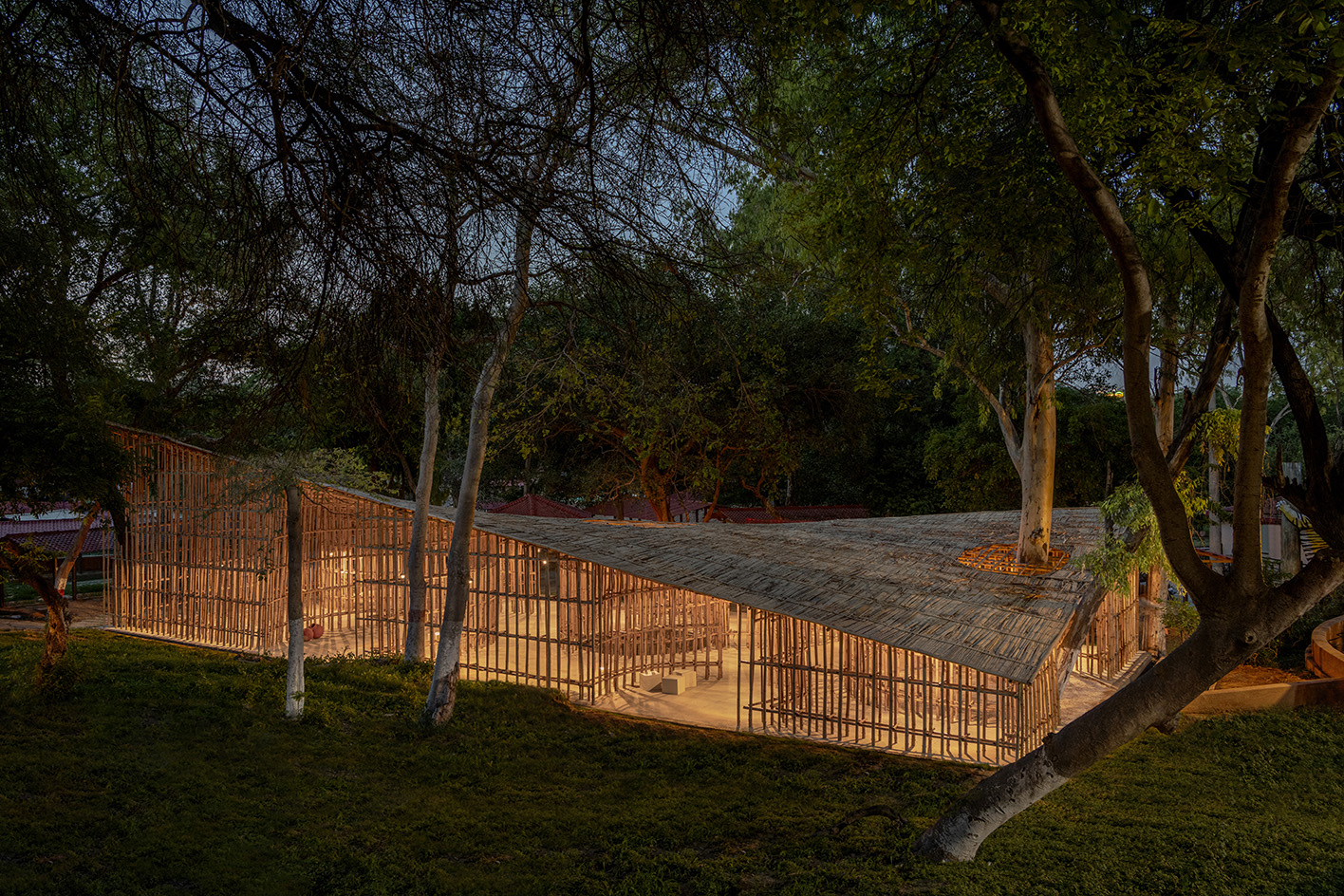
Commissioned for the 2023 Surajkund Craft Fair, the Northeast Pavilion is a striking bamboo cloud of a structure and the brainchild of Mumbai-based architecture studio atArchitecture, and its co-founders Neha Rane and Avneesh Tiwari. It is also the emerging studio’s very first completed, permanent building in India.
The structure was conceived to celebrate the tradition of local bamboo construction in line with the festival’s overall focus – the annual fair promotes Indian handicrafts, providing a platform to artisans on its site in Faridabad near the historic human-made Surajkund Lake, which was commissioned by King Suraj Pal of the Tomar dynasty in the 10th century.
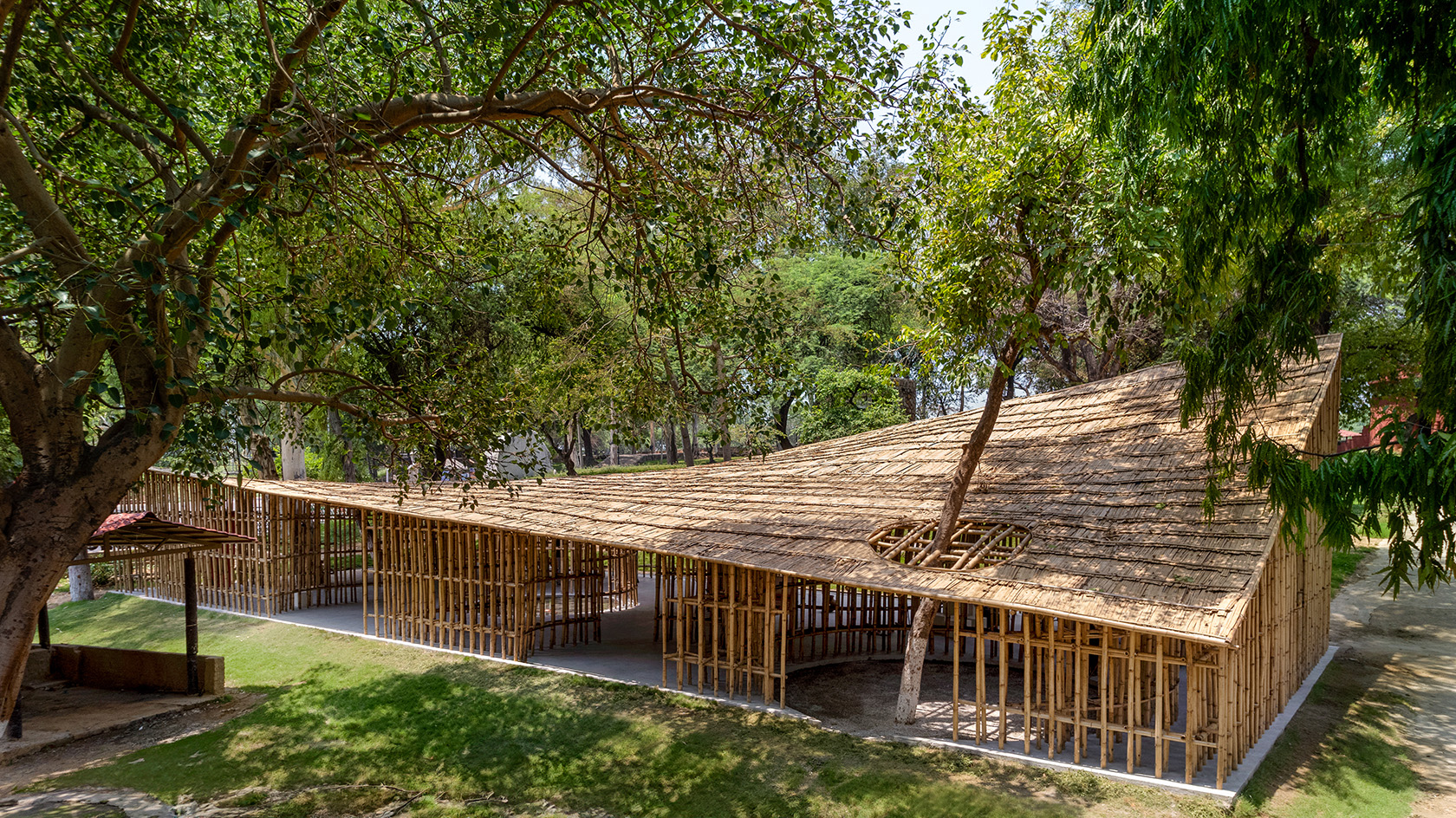
Northeast Pavilion: inspired by the region's loom craft and culture
Rane and Tiwari explain their inspiration: ‘In the [North Eastern India] region, most households have a loom and wear homemade clothes. This became the main source of inspiration – with eight indigenous looms and their working methods demonstrated by the respective artisans, tying the spaces together and becoming the focus of the exhibition.’
Reflecting this, the structure comprises eight courtyards within a clean, rectangular shape. Each one is used to create a showcase of the handlooms of each state in the region – Arunachal Pradesh, Assam, Manipur, Meghalaya, Mizoram, Nagaland, Tripura and Sikkim. The hyperbolic roof that tops it all not only creates visual drama for the building, but is also is an abstract interpretation of the land’s hilly topography.
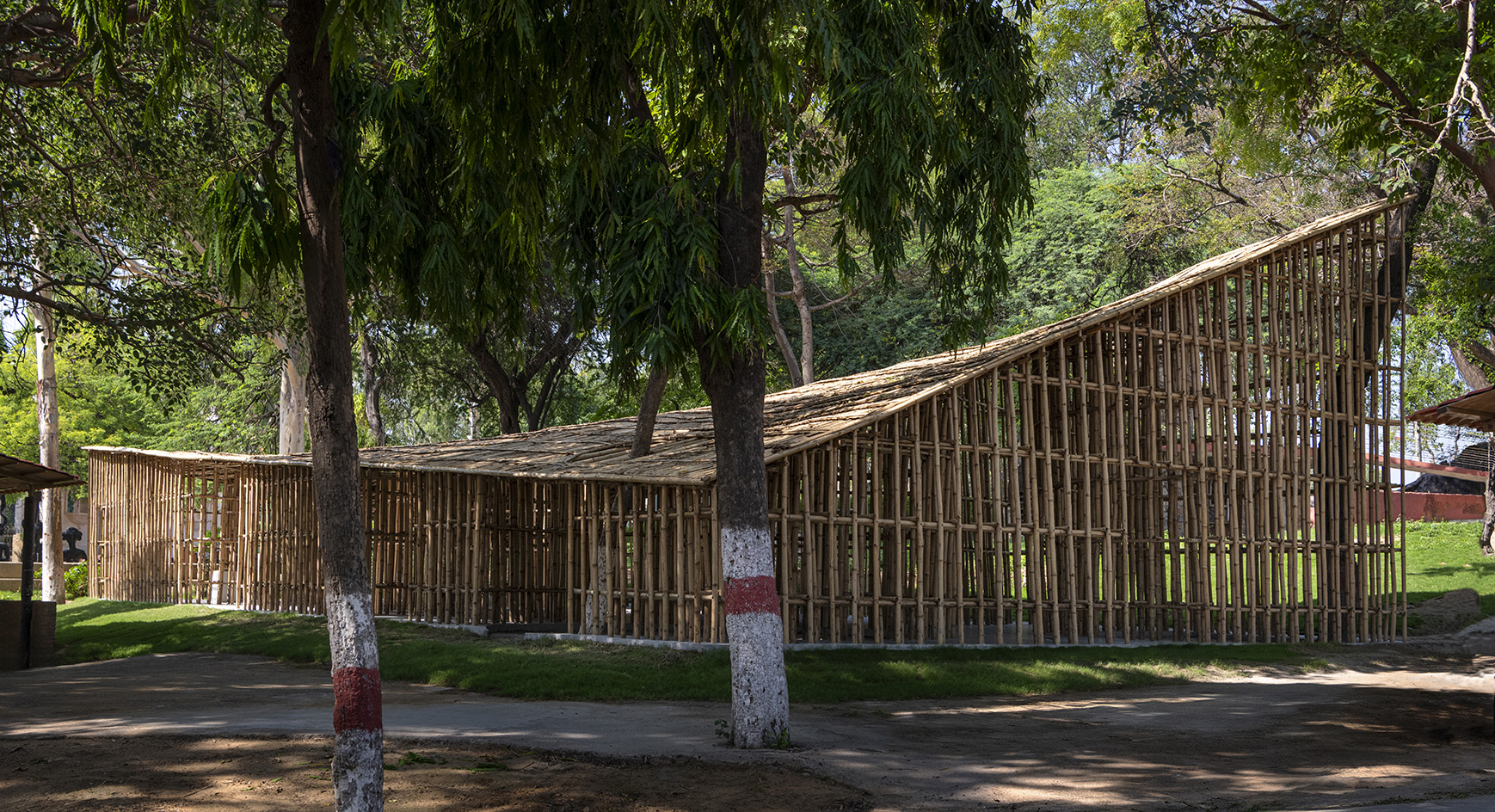
Skilled, specialist craftspeople from the area helped build the structure, which had to be erected in a mere 60-day timeframe – the project’s biggest challenge, according to the architects. ‘This included time to source bamboo [and factor in] travel for 90 craftsmen to reach the site and the building of the pavilion. The details of the bamboo joinery were developed with the help of the artisans, while many design integration decisions were made on site as the building was being constructed, with an emphasis on local collaboration and craftsmanship.’
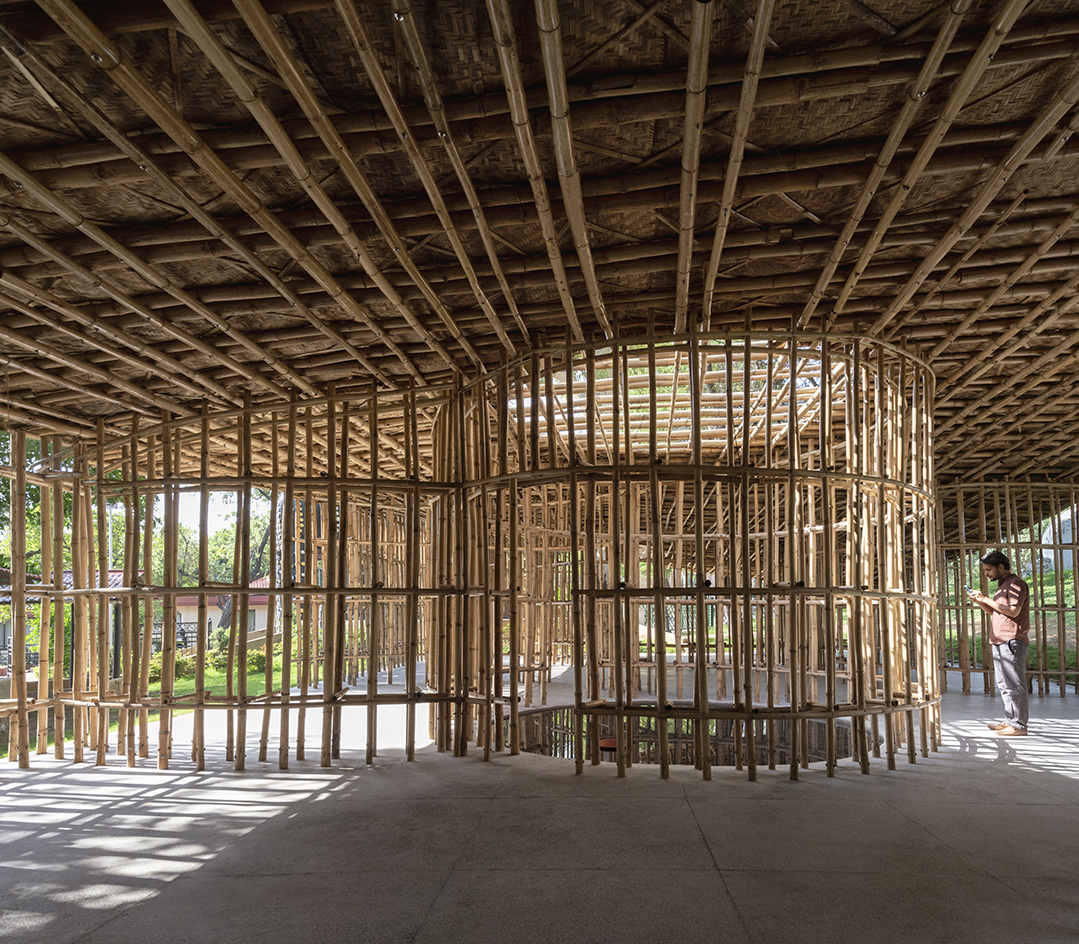
While there is a form-follows-function approach to this pavilion – its beauty, intricacy and bamboo frame defining much of its character – there are details to zoom into and moments of focus within that tell more stories. ‘The central courtyard represents Meghalaya, the rainiest landscape in the world, faces the sky and contains a pool of water,’ the architects write.
Meanwhile, the courtyards also ‘serve to enclose the century-old trees on the site, preserving the natural landscape’. It is a simple and legible design with hidden surprises within; while its open, permeable nature means that it can easily connect to its surroundings, both the flora and the other exhibits within the 100-acre fairgrounds around it.
Wallpaper* Newsletter
Receive our daily digest of inspiration, escapism and design stories from around the world direct to your inbox.
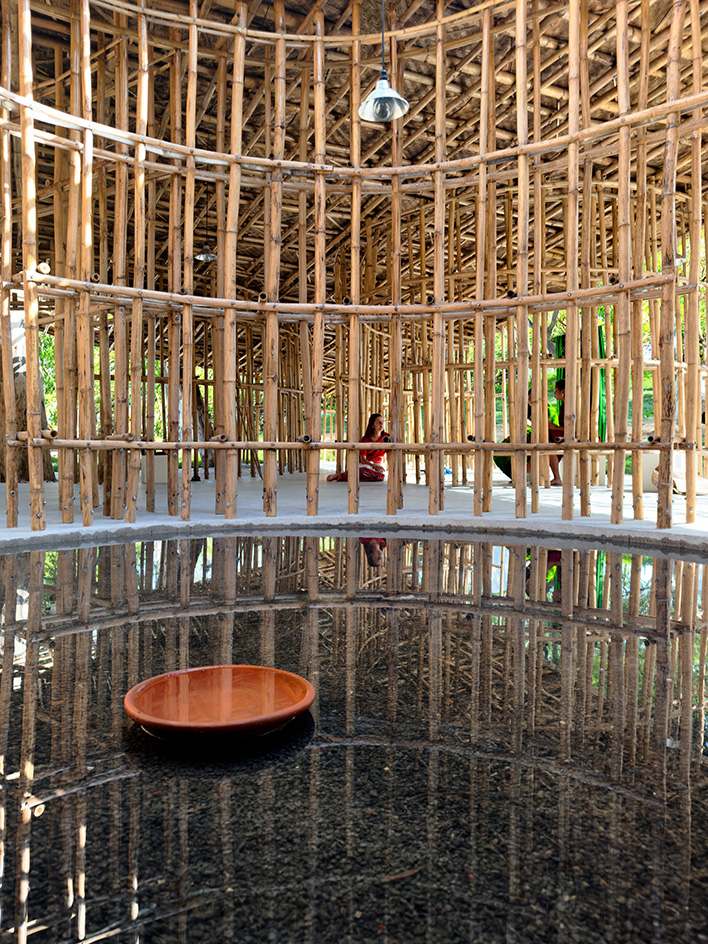
Rane and Tiwari established their emerging studio in 2014 and have been going from strength to strength since – winning the prestigious Affordable Housing Design Challenge organised by the BTI, United Nations Development Programme (Cambodia) along the way. They are now working on projects including an urban regeneration and landscaping scheme along the Brahmaputra river in Guwahati, Assam; and the Ijeirong Church in Manipur.
Ellie Stathaki is the Architecture & Environment Director at Wallpaper*. She trained as an architect at the Aristotle University of Thessaloniki in Greece and studied architectural history at the Bartlett in London. Now an established journalist, she has been a member of the Wallpaper* team since 2006, visiting buildings across the globe and interviewing leading architects such as Tadao Ando and Rem Koolhaas. Ellie has also taken part in judging panels, moderated events, curated shows and contributed in books, such as The Contemporary House (Thames & Hudson, 2018), Glenn Sestig Architecture Diary (2020) and House London (2022).
-
 Marylebone restaurant Nina turns up the volume on Italian dining
Marylebone restaurant Nina turns up the volume on Italian diningAt Nina, don’t expect a view of the Amalfi Coast. Do expect pasta, leopard print and industrial chic
By Sofia de la Cruz
-
 Tour the wonderful homes of ‘Casa Mexicana’, an ode to residential architecture in Mexico
Tour the wonderful homes of ‘Casa Mexicana’, an ode to residential architecture in Mexico‘Casa Mexicana’ is a new book celebrating the country’s residential architecture, highlighting its influence across the world
By Ellie Stathaki
-
 Jonathan Anderson is heading to Dior Men
Jonathan Anderson is heading to Dior MenAfter months of speculation, it has been confirmed this morning that Jonathan Anderson, who left Loewe earlier this year, is the successor to Kim Jones at Dior Men
By Jack Moss
-
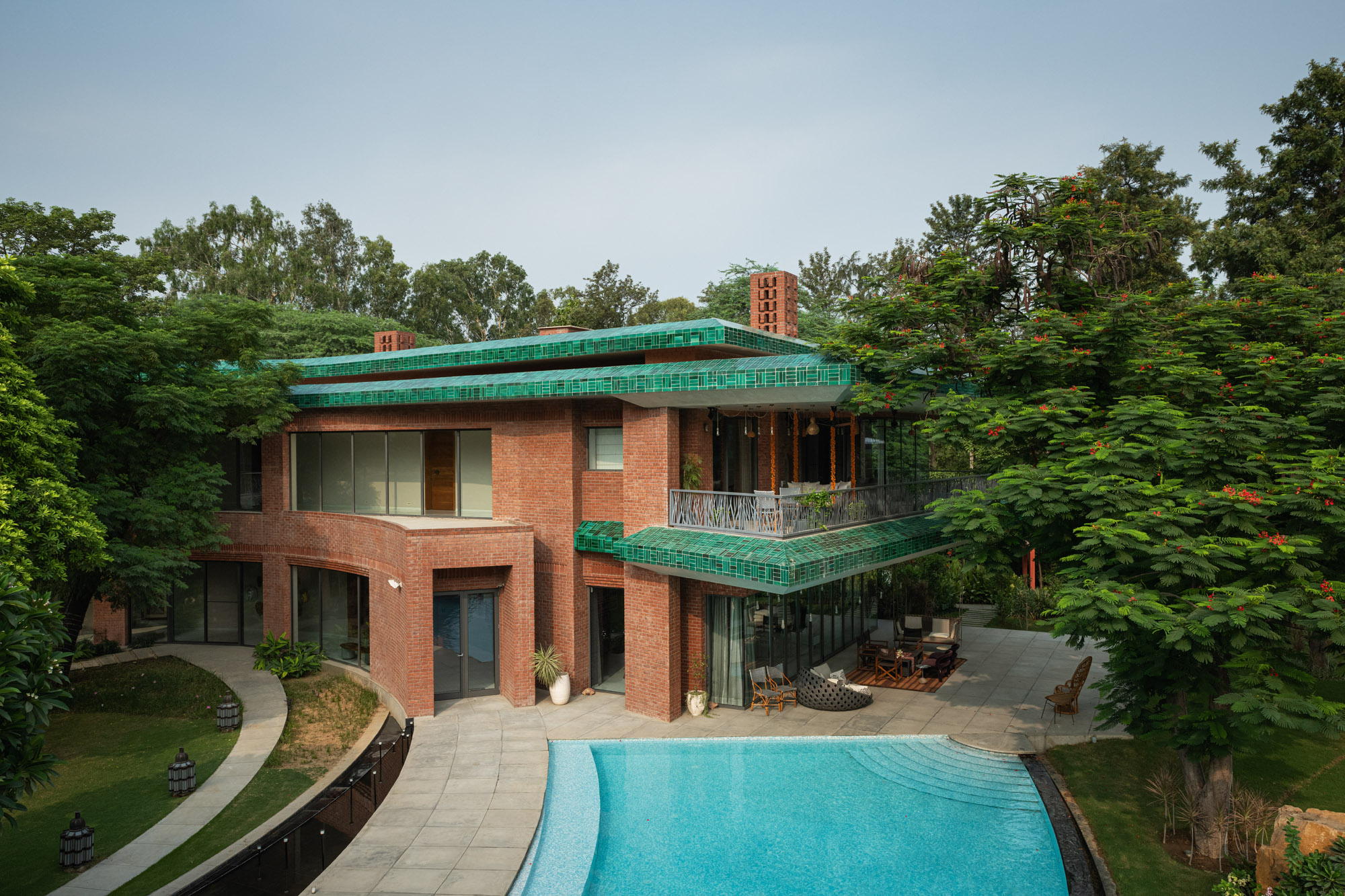 Shalini Misra’s Delhi home is a seasonal sanctuary ‘made in India’
Shalini Misra’s Delhi home is a seasonal sanctuary ‘made in India’Interior designer Shalini Misra’s retreat in the Indian capital champions modernist influences, Islamic ancestry and local craftsmanship
By Sunil Sethi
-
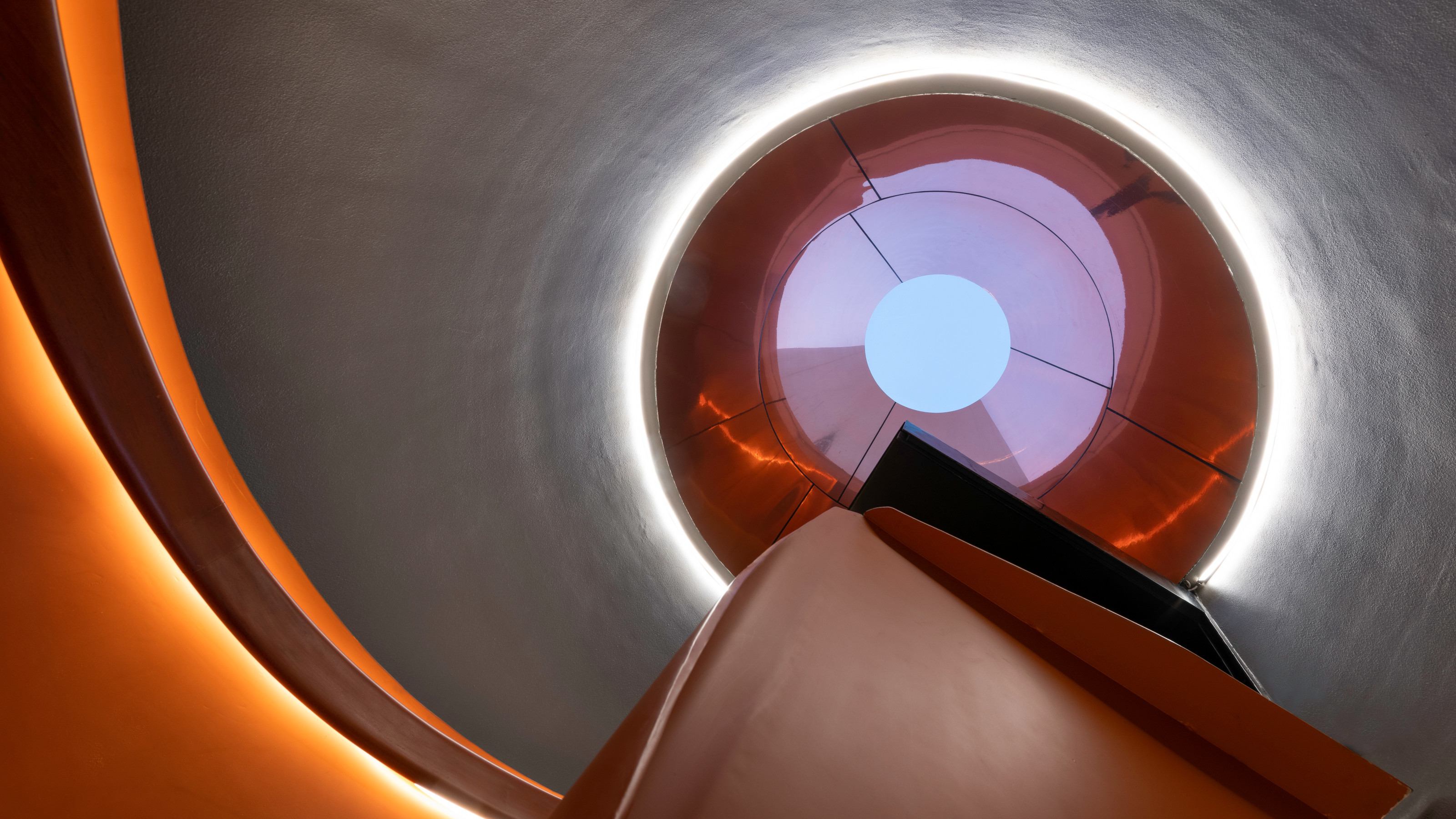 A triplex Mumbai penthouse contains sculptural staircases and expansive terraces
A triplex Mumbai penthouse contains sculptural staircases and expansive terracesEnso House is a multigenerational Mumbai penthouse by S+PS Architects that combines a reorganised interior programme with bespoke finishes and crafts
By Jonathan Bell
-
 This ‘architourism’ trip explores India’s architectural history, from Mughal to modernism
This ‘architourism’ trip explores India’s architectural history, from Mughal to modernismArchitourian is offering travellers a seven-night exploration of northern India’s architectural marvels, including Chandigarh, the city designed by Le Corbusier
By Anna Solomon
-
 At the Institute of Indology, a humble new addition makes all the difference
At the Institute of Indology, a humble new addition makes all the differenceContinuing the late Balkrishna V Doshi’s legacy, Sangath studio design a new take on the toilet in Gujarat
By Ellie Stathaki
-
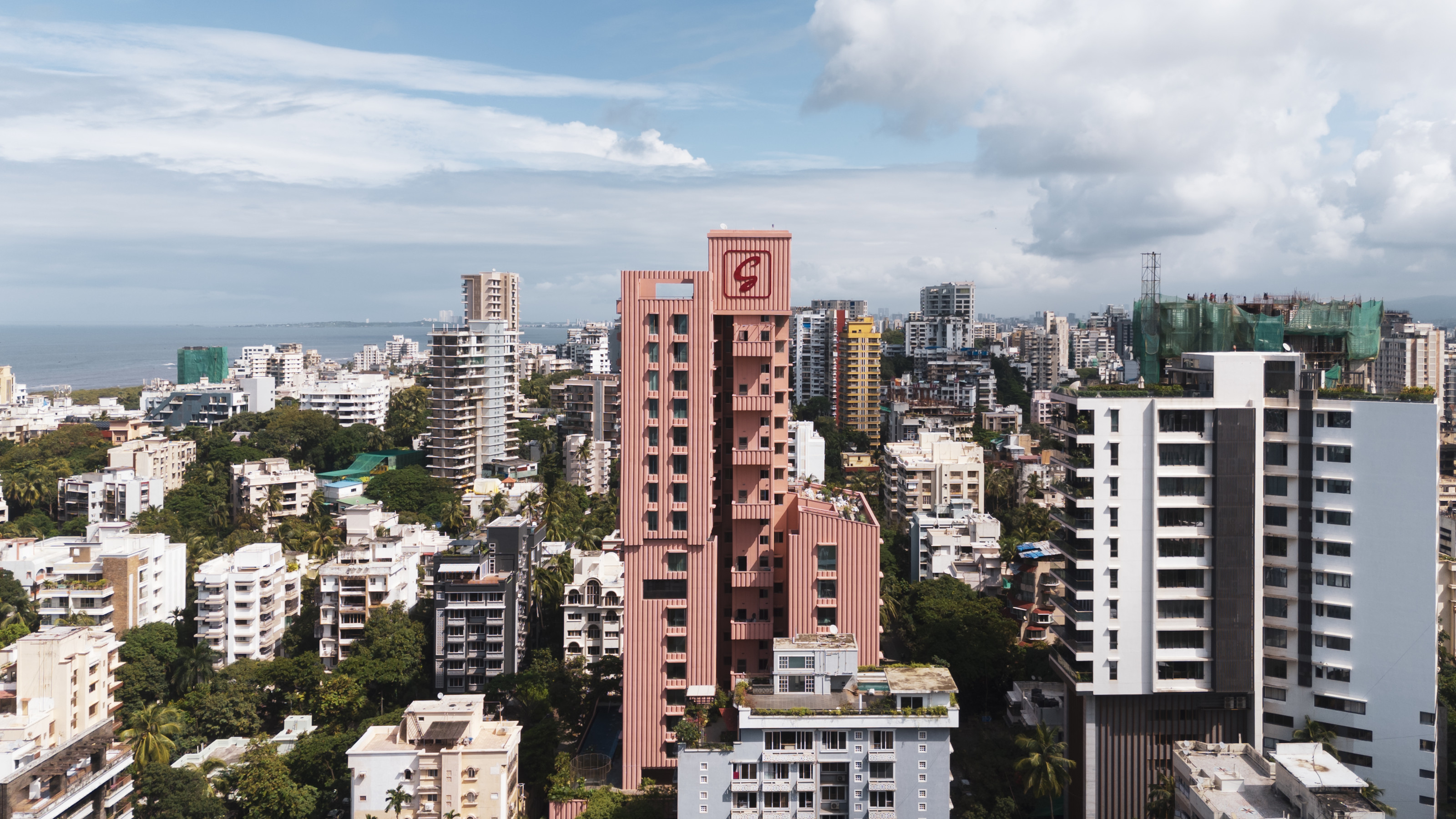 Pretty in pink: Mumbai's new residential tower shakes up the cityscape
Pretty in pink: Mumbai's new residential tower shakes up the cityscape'Satguru’s Rendezvous' in Mumbai houses luxury apartments behind its elegant fluted concrete skin. We take a tour.
By Jonathan Bell
-
 Join our world tour of contemporary homes across five continents
Join our world tour of contemporary homes across five continentsWe take a world tour of contemporary homes, exploring case studies of how we live; we make five stops across five continents
By Ellie Stathaki
-
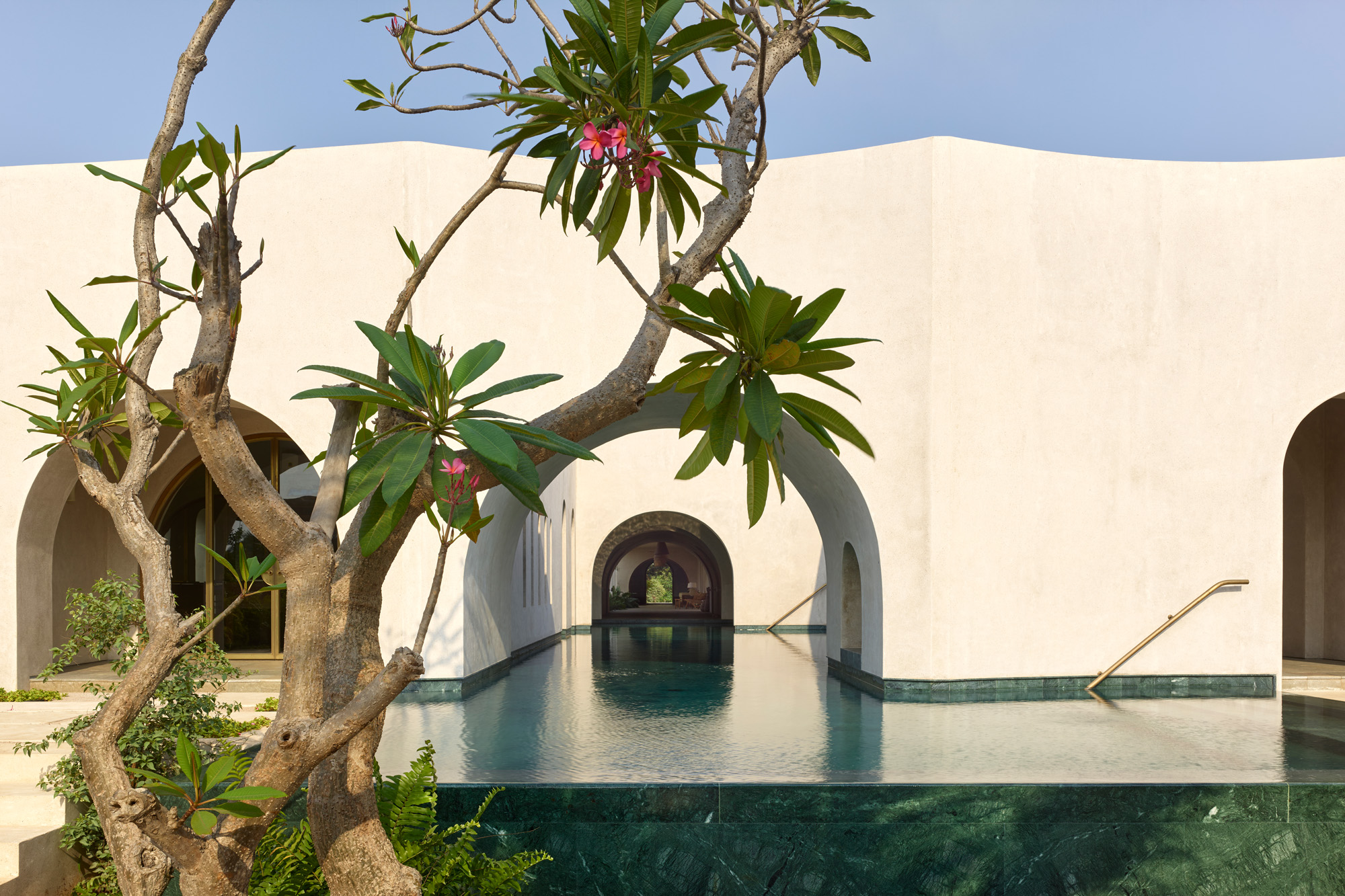 Walk through an Indian villa near Mumbai, where time slows down
Walk through an Indian villa near Mumbai, where time slows downIn this Indian villa, Architecture Brio weaves together water features, stunning gardens and graceful compositions to create a serene retreat near Mumbai
By Stephen Crafti
-
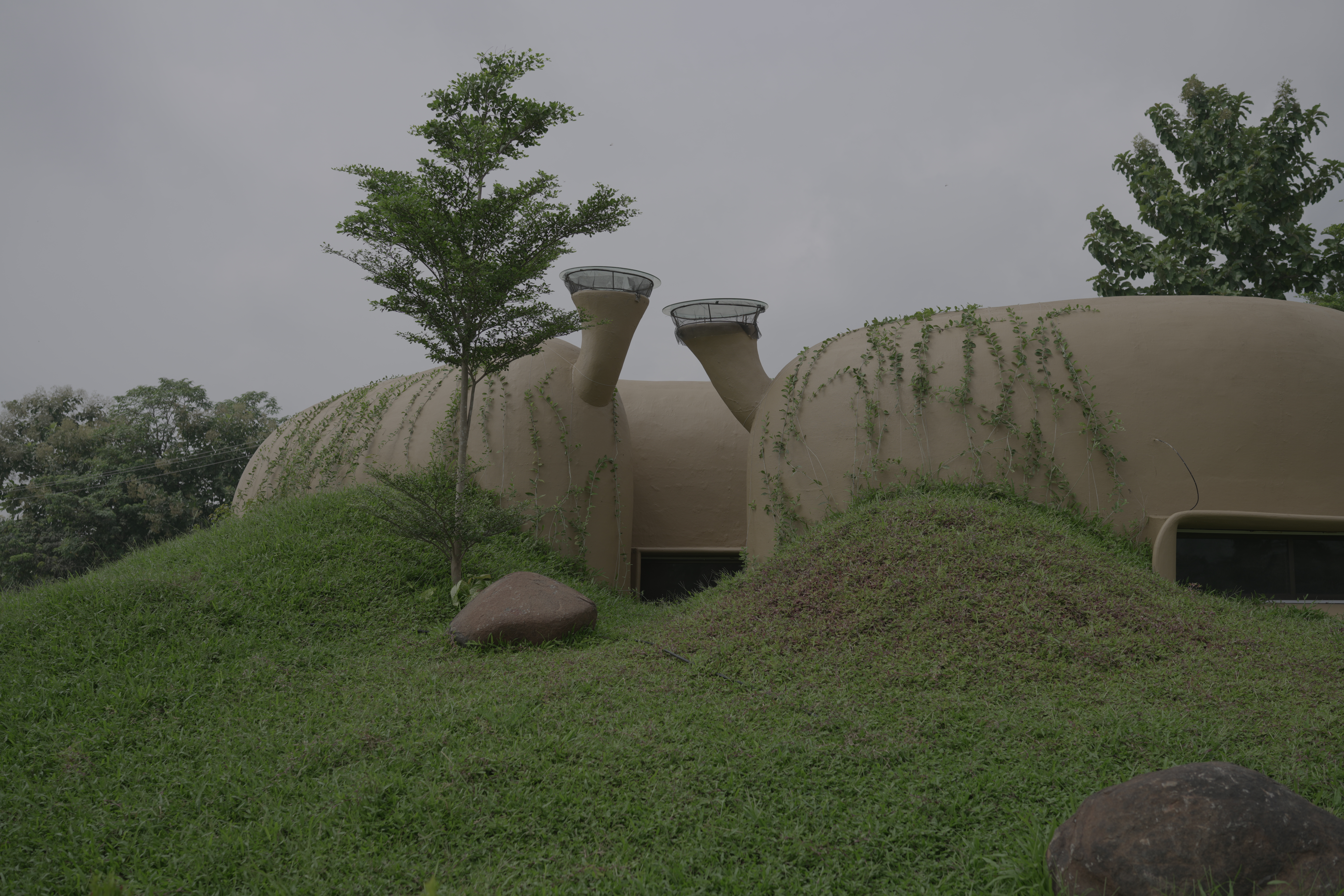 Nine emerging Indian architecture studios on a mission to transform their country
Nine emerging Indian architecture studios on a mission to transform their countryWe survey the emerging Indian architecture studios and professionals, who come armed with passion, ideas and tools designed to foster and bolster their country's creative growth
By Ellie Stathaki